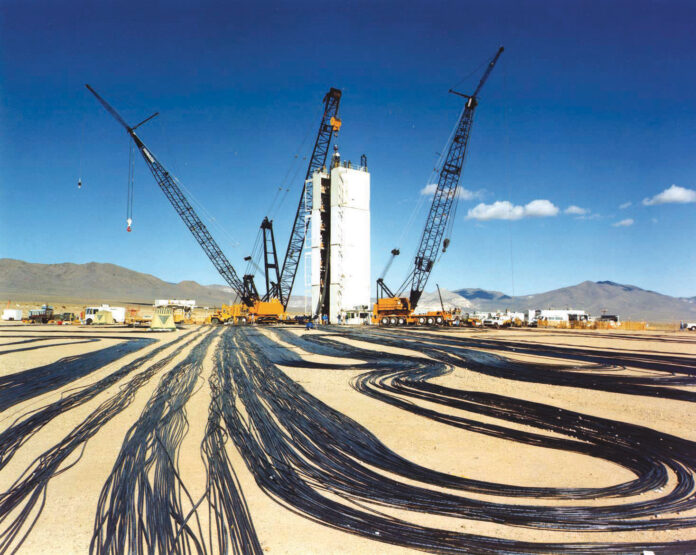
Case Intel
- The United States publicly announced that it will resume nuclear weapon explosive tests immediately, marking a major departure from the moratorium begun in 1992.
- The last U.S. nuclear explosive test occurred on September 23, 1992, code-named “Divider” (underground at the Nevada Test Site).
- President Donald J. Trump issued the directive on October 29, 2025, on Truth Social, ordering the Department of War to “start testing our Nuclear Weapons on an equal basis” with Russia and China.
WASHINGTON, DC – On October 29, 2025, President Trump announced that the United States has “more Nuclear Weapons than any other country … and this was accomplished, including a complete update and renovation of existing weapons, during my First Term in office.” He declared that “Russia is second, and China is a distant third, but will be even within 5 years.” He then stated:
“Because of other countries testing programs, I have instructed the Department of War to start testing our Nuclear Weapons on an equal basis. That process will begin immediately.”
With that public announcement, the U.S. appears to be formally ending the testing moratorium that had been observed since 1992 — when the last U.S. nuclear explosive test, code-named “Divider,” was conducted underground at the Nevada Test Site.
In the realm of space law and outer-space security, the decision also carries meaningful implications. The 1963 Partial Test Ban Treaty prohibited nuclear explosions in the atmosphere, outer space and underwater; the U.S. remains party.
Should any testing facility or detonation approach the outer-space threshold or involve high-altitude platforms (including suborbital tests), the move could raise legal entanglements under the Outer Space Treaty or other space-law regimes. More generally, resuming testing may spur adversaries to shift into novel domains — e.g., dual‐use nuclear-powered space systems or nuclear-armed satellites — with little margin for legal clarity or escalation control.
Domestically, the safety, environmental and regulatory risks are non-trivial. While the last U.S. nuclear explosive test in 1992 was underground, a decision to “start testing … on an equal basis” with Russia or China may raise questions about yield, location, and yield containment methods.
Beyond explosive detonation testing, there are 3-D Codes, as used in the early 1980s, when the United States had conducted more than 970 nuclear tests, most of which had the basic purpose of increasing the scientific data associated with weapon design and refining specific designs.
The national security laboratories had acquired the most capable computers of the time and were expanding the computer codes to analyze, for example, fissile material compression and fission events in a three-dimensional (3-D) model. By the mid-1980s, use of 3-D codes had become routine.
The 3-D codes provided more accurate estimates of what would be achieved with new designs or what might happen, for nuclear detonation safety considerations, in an abnormal environment. With recent advancements in AI and quantum computing, this type of 3-D modeling could now potentially be taken to the next level.
In terms of confrontation posture, the U.S. directive to resume nuclear testing effectively shifts from a deterrence-only model (where the U.S. stockpile is maintained and certified via simulations and sub-critical tests) to an active demonstration of testing capability. The strategic logic is that adversaries will recognize the U.S. is willing to up the ante.
In short, the U.S. announcement marks a pivot point in arms-control policy. It does not necessarily mean immediate above-ground atmospheric detonations, but the stated goal of testing “on an equal basis” suggests a readiness to undertake full-yield explosive tests after decades of moratorium.


